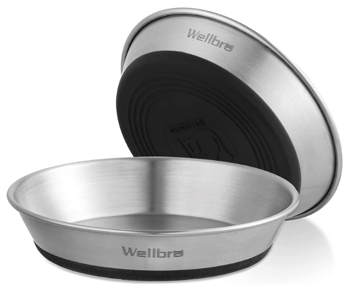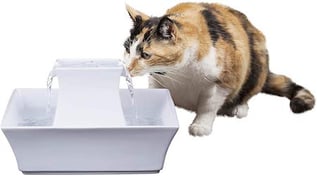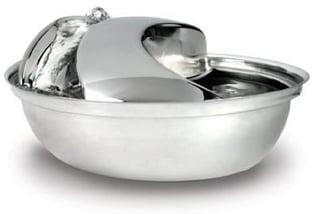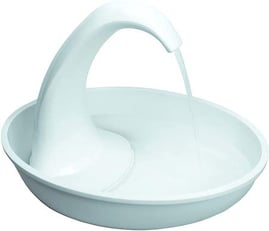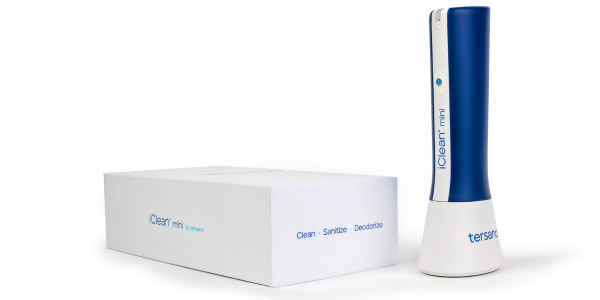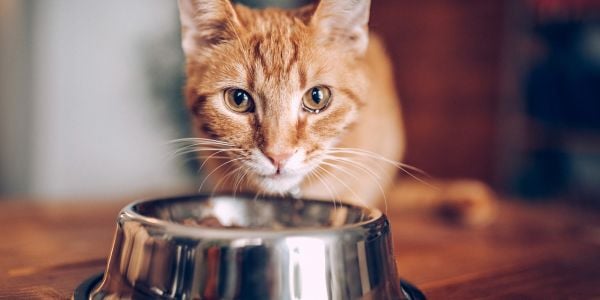
Personally, when it comes to drinking and eating tableware, I have no preferences as long as I can consume what I want.
But I know some people (my son) who are a bit particular when it comes to these things.
So, if people can have their preferences with regard to what they eat and drink from, then cats most certainly have the right, too!
It may seem crazy, but "cat bowls" aren't created equally, and in fact, what works for one cat may not work for another.
Bowls come in many shapes and sizes and are made of different types of materials, and then there are times when a bowl isn’t the way to go for feeding and watering. So how is someone supposed to know what to use?
My hope is that I can help you figure out what to feed (and water) your cat from, i.e., the types of bowls that will be best for your cat. And I also added an easy bonus trick for how to quickly, inexpensively, and effectively disinfect your cat's bowls at the end.
Skip to section:
What Type of Cat Bowls You Should Use for Food and Water
The shape, size, depth, and material bowls are made of can matter to your cat. Some materials are more durable and less likely to harbor bacteria. And, of course, every cat is different and may have different preferences for the size, shape, and depth of their bowls.
Here are some general guidelines to help you make the best decisions when you're faced with the (often) overwhelming options of cat food and water bowls.
Best Material for Cat Bowls
To be honest, I am not sure one can use the term ‘best.’ While some material may be better for one reason, it may not be for other reasons. Since each material type has its pros and cons, and what is a pro to one cat may be a con for another, it is hard to call anything ‘best.’
I will do my best to give you what I feel is the ‘good’ and ‘bad’ about each material type for bowls so that you can decide what will be best for your cat.
Stainless-steel
In most cases, stainless steel is considered the ‘best’ material for cat food and water bowls. You want to purchase those labeled as grade 304 or 18/8.
The numbers indicate the quality, durability, and resistance to corrosion. This grade of steel is the most common one used in food prep items.
Avoid stainless-steel bowls labeled for ‘pet use’ only, as they are generally made of lesser-grade stainless steel.
The pros of stainless-steel cat bowls include:
- Germ resistant
- Lightweight
- Easy to clean and disinfect
- Extremely durable
- They won't scratch, stain, or rust
- They don’t absorb odors
- They are dishwasher-safe
- Cats aren’t allergic to them
- Anti-skid designs
- Anti-tip designs
- They can be modern-looking
- Recommended by most veterinarians and used in veterinary hospitals
The cons of stainless-steel cat bowls include:
- Some stainless steel is of poor quality, especially if the material was imported, and can contain lead or radioactive material. In 2013, there was a recall by Petco due to radioactive cobalt-60 being found in bowls from overseas manufacturers.
- Not all stainless-steel bowls (e.g., those manufactured outside the U.S.) are made by companies that manufacture under the Good Manufacturing Process (GMP), and therefore, there is no guarantee that safe materials or manufacturing processes have been used or that the product is free of harmful toxins.
- Since cats like to push their bowls around and tip them over, stainless-steel bowls can be noisy.
- It is possible that poor-quality bowls could cause a metallic taste or interfere with the flavor of the food or water.
- For some cats, seeing their reflection in the bowl can spook them.
- If your cat has acne, you should reconsider using a metal bowl as they may have a reaction to it, which is uncommon, but possible. A ceramic bowl would be preferable.
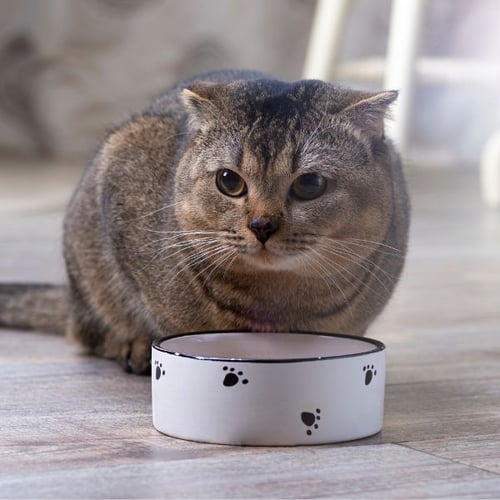
Glass and Ceramic
Glass and ceramic dishes are the next common type of bowl material you will find.
The pros of glass and ceramic cat dishes include:
- Easy to clean
- They don’t change the flavor of foods
- They come in fun or attractive patterns and colors
- Many are dishwasher-safe
- Many ceramic dishes are heavy enough that cats can’t push them around when eating
- The transparency of the glass makes it obvious when the dish is dirty
- Glass dishes are often very affordable
The cons of glass and ceramic cat dishes include:
- They are easy to chip or crack. Any chips or cracks can lead to cuts on your cat's tongue, paws, or chin or provide areas where bacteria can grow and fester. Additionally, these defects may also cause your cat to be exposed to harmful chemicals.
- They can shatter or break easily. Cats can injure themselves on sharp shards.
- Food-safe glass that is made within the U.S. is regulated by The Food & Drug Administration. However, glass manufactured elsewhere does not have the same regulations and may potentially include additives that are not safe for food contact.
- The glaze used on some ceramic dishes may contain lead or other toxins, which are not safe for food contact.
- Some paint used on these types of bowls may contain toxins.
- Unlike glass and ceramic dishes used for human food service, pet versions do not have to be certified as safe for food.
Plastic Bowls
Last and certainly least are plastic bowls.
Sure, they come in many shapes, colors, and sizes. They are lightweight and very affordable. But all of these ‘pros’ are highly outweighed (in my opinion) by the cons.
Plastic materials can get easily damaged by hungry teeth, playful nails, or even in the dishwasher resulting in dangerous sharp edges or pieces that can be ingested.
Scratches or other imperfections can create perfect hiding spots for bacteria or the formation of biofilms that could cause a bout of digestive upset, a case of cat chin acne, or lead to periodontal disease if they're on the rim or inner sides of the bowls.
Some plastic bowls contain bisphenol A (BPA) and phthalates. These compounds are known to cause serious health concerns for people, and the same side effects are suspected for pets.
If your cat's bowl is made of less-than-desirable materials that may contain lead or other unwanted substances, then washing them in the dishwasher may contaminate your own dishes and utensils.
Best Size and Shape for Cat Food Bowls
There’s no 'one-size-fits-all' or even 'one-shape-fits-all' rule for cat bowls.
All cats are different, and each has their own particular preferences and quirks when it comes to their bowls. If you're going with standard bowls (as opposed to food puzzles) for your cat's food, you’ll probably have the most success starting with bowls that:
- Are wide but not too deep.
- Have gradually sloping sides, rather than sides that rise up at a 90-degree angle — to avoid 'corner traps where it can be difficult for your cat to easily get at their food.
- Have non-skid padding or other surfaces on the bottom to prevent their bowls from running away from them.
Here are some great and simple basic bowls that I recommend, and they're inexpensive enough for you to have a large supply, so you can more easily rotate them out as you wash your cat's food dishes at the end of each day!
DuraPet Stainless Steel Bowl
Available on Amazon
Wellbro Food-grade, Non-Slip Stainless Steel Bowls
Available on Amazon
I am adding this ‘bowl’ feeder because I think it is really cool, and it has some beneficial features! One (of the many) nice features is that the feeding dish is stainless steel.
Another great thing is that it allows you to monitor your cat’s eating habits and behaviors since it has a built-in camera.
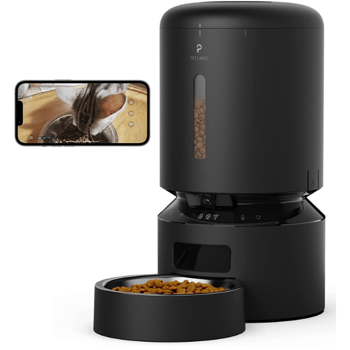 Wellbro Food-grade, Non-Slip Stainless Steel Bowls
Wellbro Food-grade, Non-Slip Stainless Steel Bowls
Available on Amazon
Whisker Fatigue
You may have heard the term whisker fatigue. While it may sound made up, it is very real and can impact the type of bowl you feed your cat from.
Learn more about whisker fatigue and the many other reasons why your cat could stop eating — and what you can do about it.
Here are some bowl options for cats that may have whisker fatigue:
Whisker Fatigue Stainless Steel Cat Dish
Felli Pet Oblik Whisker Fatigue Relief & Anti-Vomit Elevated Cat Food Bowl
Kathson Stainless Steel Whisker Relief Bowl
Pro Tip: Bowls that are specifically designed for whisker fatigue have very low sides, and since cats like to push their food around, things can get messy.
To manage the mess and help with clean up, place these types of bowls on a non-toxic silicone mat.
Best Water Bowls and Fountains for Cats
Some cats are perfectly fine drinking from a plain ol' water bowl. But there are other cats that much prefer a random mug or water glass — you'll know if your cat is one of these if you wake up in the middle of the night to the sound of your kitty lapping up the water from the glass next to your bed!
Other cats are enthralled by the look, sound, and taste of running water — these are the cats that jump into the sink or shower after you're done to lap up the residual water as it drips out of the faucet.
Being sure you know how your cat prefers their water served is very important.
Cats aren’t known to be big drinkers, so the last thing you want to do is serve them water in a way that discourages them from drinking.
It is essential for your cat to drink water.
The most obvious reason is to prevent dehydration. But aside from this very important reason, consuming water is necessary for the following:
- Helps flush toxins from the kidneys
- Decreases the chances of kidney and bladder stones
- Aids in digestion
- Helps maintain body temperature
- Helps with circulation
- Aids in the transport and absorption of nutrients
- Helps keep essential body organs hydrated and healthy so they can properly function, and many more reasons
Typically, cats need between 3.5–4.5 ounces (about ½ a cup) of water per 5 pounds of body weight per day. If you have a 10-pound cat, they should be consuming between 7–9 ounces (about 1 cup) of water.
The keyword here is “consume” since cats don’t need to get their water just by drinking. They get water from eating wet food as well.
If one of the watering options below isn’t encouraging your cat to drink, make sure to read our article on helping your cat stay hydrated.
Water Bowl Options
This PEGGY11 stainless steel metal cat bowl set works well as a good ‘ol watering bowl.
For big drinkers or multi-cat households, this RIZZARI automatic pet waterer may be a good option. Your cats can drink from a stainless-steel bowl; it has a filter, plenty of water to last all day, no need to worry about power outages, and is easy to clean.
Water Fountain Options
Many cat owners and cats prefer their water served in bowls. Personally, however, I recommend water fountains for cats.
Cats generally like fresh, cool water, and many of them like it to be flowing. Water fountains keep water flowing, and in doing so, the water is cooler and fresher.
One study showed that the water consumption rate was higher for flowing water as compared to still water.
Some other great benefits to water fountains include:
- They hold more water than a typical bowl, which prevents your cat from running out of water during the day
- They are harder to tip over, even if your cat likes playing in their water
- They have filters to remove contaminants such as dirt, fur, and other water impurities
- Some water fountains, when disassembled, are top-rack dishwasher safe
I will mention some cons so you don’t think I am totally biased toward fountains.
Water fountains do require a little more maintenance than a bowl, in that the filters need to be routinely changed.
This adds another con in that the filters cost money, and if you don't do it, bacteria and biofilm will build up (see more on that below in the cleaning section).
They can be a little more time-consuming to clean as compared to a bowl, especially when it comes to cleaning the spout and other little corners.
Some water fountains can be noisy, especially when the water level gets low. But that could also be a pro since it reminds you to refill it!
Fountains do have cords, which can be an issue if your cat is the type that likes to bite electric cords.
If you do have a cord-chewing cat, read this article because it is important to know what to do if they get electrocuted and how to prevent it.
Power outages can be an issue when using water fountains – without power, they don’t work. Therefore, you really should provide your cats with multiple water sources. All cats should have a plain ol’ water bowl or two lying around.
If your cat likes to drink out of cups and mugs, leave out a few of those, too.
FYI, I found a solution for these last two cons! See cordless fountains below.
PetSafe Two-Tier Water Fountain
Available on Amazon | Available on Chewy
Pioneer Raindrop Water Fountain
Available on Amazon | Available on Chewy
Pioneer Swan Water Fountain
Available on Amazon | Available on Chewy
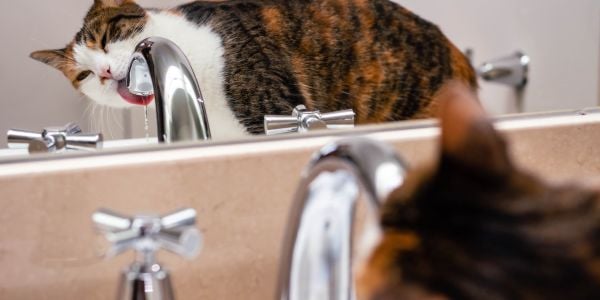
Cordless and Battery-Powered Water Fountains
One of the cons of some fountains is that the motor for the filter makes noise. Both of these fountains claim to be very quiet. If noise bothers you or your cat, one of these fountains may suit your needs.
Kastty Wireless & Rechargeable Battery-Operated Cat Water Fountain
PETLIBRO Battery-Operated Cat Water Fountain
Why You Should Clean Your Cat’s Bowls and Fountains Regularly
Did you know that pet bowls are the fourth germiest household item per NSF International? (And as an aside, pet toys ranked number 7! So don’t forget about cleaning toys too!)
Ideally, you should clean your cat's food and water bowls (or interactive feeder) every day after each meal, especially if they have issues with cat acne or are immunocompromised.
I mean, who wants to eat or drink from a bowl that may contain bacteria, yeast, or mold?
Your cat can get sick (vomiting, diarrhea, change in appetite, or potentially more serious issues) if they ingest harmful bacteria that is left to flourish following a meal if the dish isn’t washed.
Some possible examples of bacteria that can be present include Staphylococcus aureus, Pasteurella multocida, Streptococcus, Enterobacteria, Neisseria, Moraxella, Bacillus, and, though less common, Salmonella and Pseudomonas.
These bacteria can also pose human health risks, especially for young children, seniors, or those who are immunocompromised. Therefore, it is always recommended that one wash their hands with hot water and soap before and after handling pet food and bowls.
If the bacteria flourishing in the bowl weren’t enough to make you want to wash them daily, perhaps biofilm is. Biofilm is that slimy, sticky, and disgusting layer of microorganisms that clings to wet surfaces.
The belief is that it is responsible for about 80% of infectious diseases affecting animals and people. Biofilm has been known to cause health problems such as urinary tract infections and kidney issues.
Periodontal disease in cats has also been linked to biofilm.
How to Clean Cat Fountains
Just because fountains have filters doesn’t mean they don’t need routine cleaning.
Be sure to disassemble the fountain and clean it regularly. While some parts can be soaked and wiped, others, like the spout and motor, need a little extra cleaning attention.
Cleaning them with a small flexible bottle brush helps remove debris that may be stuck, causing bacteria to grow.
How to Clean Cat Bowls
Admittedly, washing your cat’s bowls after every meal is not always practical in a busy home. Try to clean as often as you can, but especially if you can see bits of caked-on food clinging to food bowls/feeders or if your cat's water starts to collect a layer of visible saliva and/or cat fur.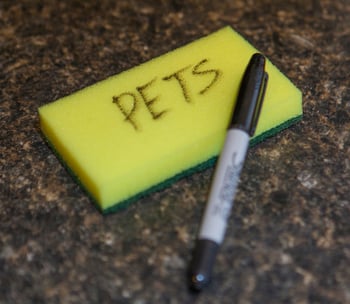
If possible, use the dishwasher to clean and disinfect bowls. If you choose to hand-wash, set aside a dedicated sponge for your pet bowls (you probably don’t want to transfer the gunk from pet bowls onto your human dishes, or vice versa).
A trick to avoid confusing the sponges is to write “Pets” on one sponge using a Sharpie marker.
Quick Daily Disinfection With Vinegar
For a quick and effective daily disinfection, spray bowls or feeders with vinegar. After the vinegar has sat on the surface for at least five minutes, rinse it off. Then spray it with hydrogen peroxide.
Leave the hydrogen peroxide to sit for at least 5 minutes and then rinse thoroughly. It’s easy and non-toxic to pets.
Check out this study to learn more about the benefits of disinfecting with vinegar and hydrogen peroxide.
Note: To make a spray bottle of vinegar, mix 1 cup of vinegar into 1 liter of water. If the smell of vinegar is a turnoff for you, you can add a little lemon juice.
IMPORTANT NOTE: DO NOT mix the vinegar and hydrogen peroxide in the same spray bottle or spray them both on at the same time. Combining them can create peracetic acid.
Peracetic acid can be toxic and could potentially irritate your throat, lungs, eyes, and skin. Just rinse the vinegar off the bowls thoroughly after at least 5 minutes (ideally 10–15 minutes) of contact time before applying the hydrogen peroxide.
Cleaning Without Bleach
One simple and easy way to clean bowls without having to put them in the dishwasher is to clean with Tersano's iClean mini.
We love the iClean mini because you can use it anywhere (even on fabric and furniture) and it's a triple threat: It cleans, sanitizes (kills up to 99.999% of germs), and deodorizes.
While it may seem almost too good to be true, this technology has been proven by independent laboratories to kill a wide range of pathogens, including COVID-19, Canine Parvovirus, Feline calicivirus, E. coli, Salmonella, Listeria, and many, many more.
Cleaning With Bleach
I know there are some pet owners who don’t feel something is truly disinfected unless it has been cleaned with bleach. For my bleach fans, you can mix 1/3 a cup of bleach with a gallon of water or 4 teaspoons bleach per quart of water.
Soak or spray the bowls, and be sure to have contact time of at least a few minutes. Be sure to rinse very well and air dry.
If you are like me and just don’t have the energy to wash bowls daily, I would suggest having some extra bowls on hand. Just keep the clean ones next to your cat’s food. You can use a stacking dish rack for convenience.
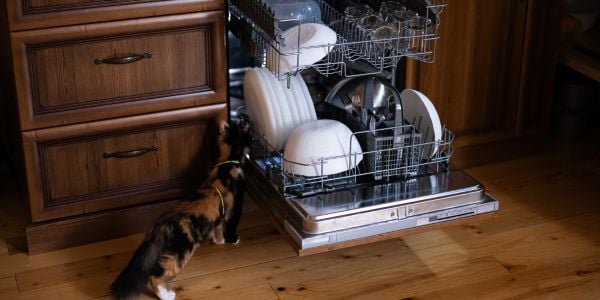
I know this was likely more information about bowls than you ever imagined you needed or wanted. But I hope it helps you find a feeding and watering bowl that works for your cat and you!



